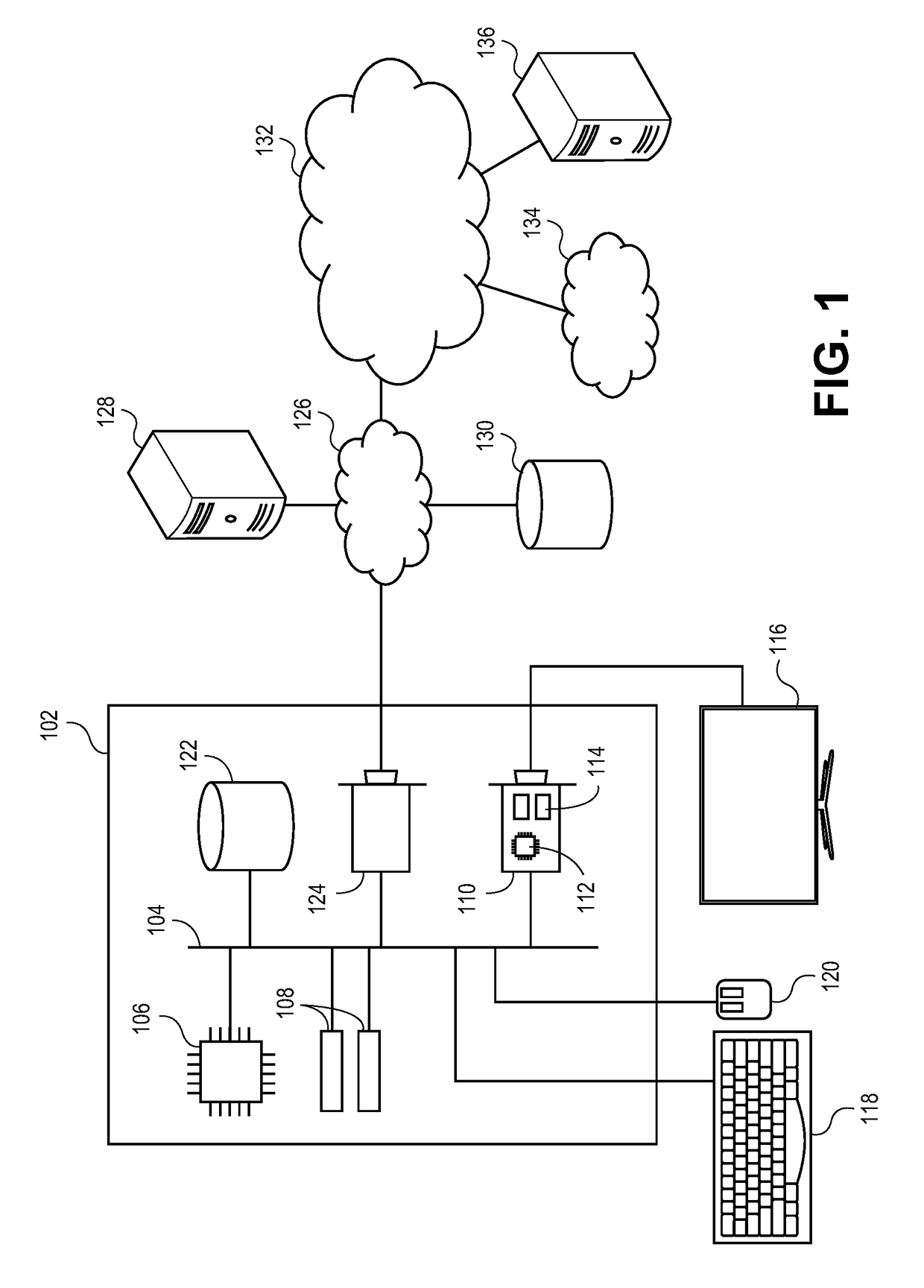System for virtual reality display
a virtual reality display and display system technology, applied in static indicating devices, instruments, optical elements, etc., can solve the problems of head-mounted, unusable immersive three-dimensional displays, and significant kinetosis of users of three-dimensional displays,
- Summary
- Abstract
- Description
- Claims
- Application Information
AI Technical Summary
Benefits of technology
Problems solved by technology
Method used
Image
Examples
Embodiment Construction
[0013]At a high level, embodiments of the invention address the disconnect between visual cues indicating motion and non-visual cues indicating a lack of motion, thereby reducing the incidence of kinetosis. In particular, embodiments of the invention can both add audio cues corresponding to motion in the virtual scene and remove problematic peripheral visual cues using selective blinders. When the user is moving parallel to a large object such as a wall or rotating near an object, the relative motion creates a high degree of optic flow indicating rapid movement to the user. When this motion is not confirmed by non-visual cues (for example, from the user's vestibular system), kinetosis can result.
[0014]Removing or reducing the visual cues associated with this motion can be done by selectively applying a blinder to (or “blindering”) a border of the display where the motion is taking place. A blinder is an opaque or semi-opaque region placed at the periphery of an image to be displayed...
PUM
 Login to View More
Login to View More Abstract
Description
Claims
Application Information
 Login to View More
Login to View More - R&D
- Intellectual Property
- Life Sciences
- Materials
- Tech Scout
- Unparalleled Data Quality
- Higher Quality Content
- 60% Fewer Hallucinations
Browse by: Latest US Patents, China's latest patents, Technical Efficacy Thesaurus, Application Domain, Technology Topic, Popular Technical Reports.
© 2025 PatSnap. All rights reserved.Legal|Privacy policy|Modern Slavery Act Transparency Statement|Sitemap|About US| Contact US: help@patsnap.com



